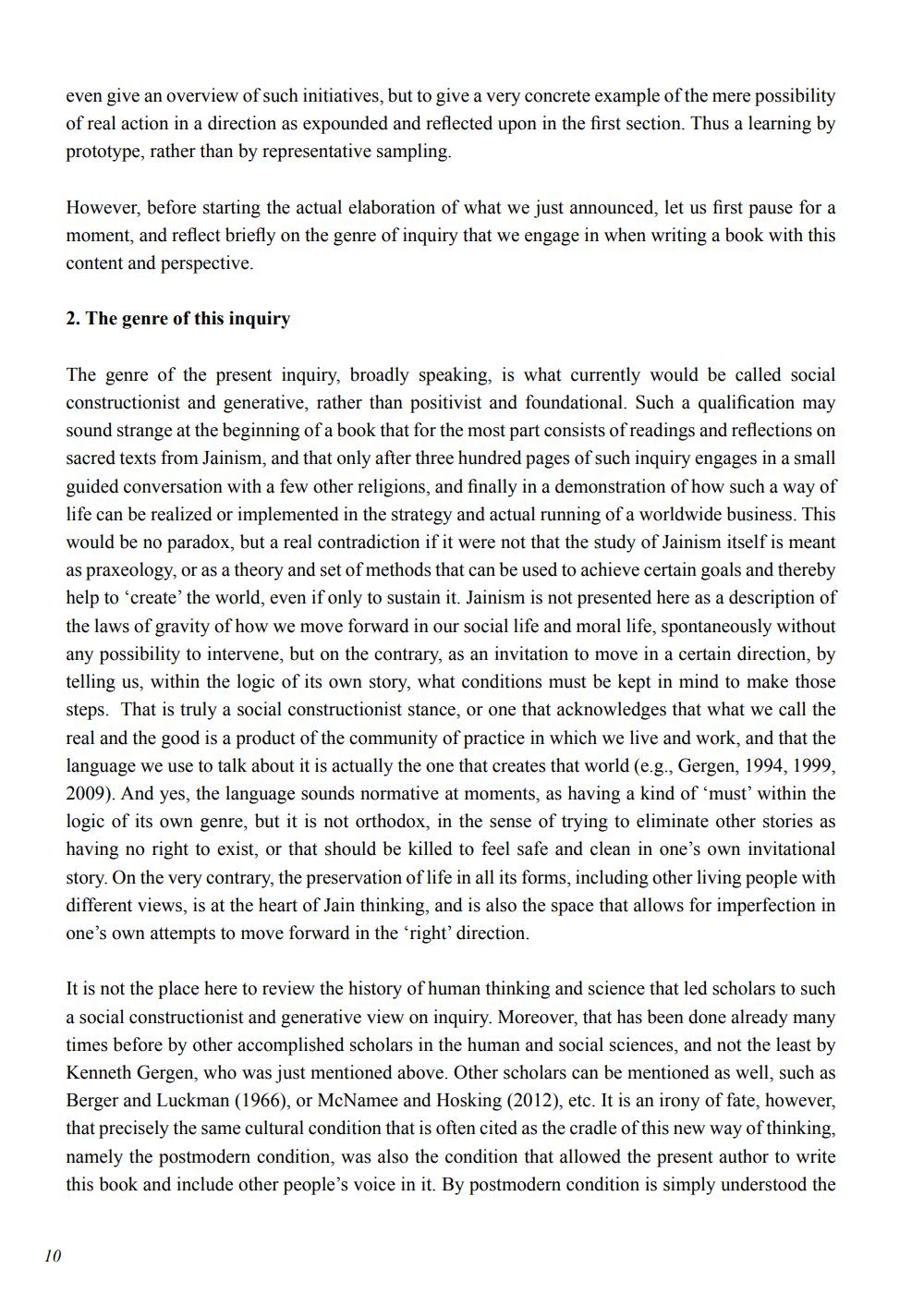________________
even give an overview of such initiatives, but to give a very concrete example of the mere possibility of real action in a direction as expounded and reflected upon in the first section. Thus a learning by prototype, rather than by representative sampling.
However, before starting the actual elaboration of what we just announced, let us first pause for a moment, and reflect briefly on the genre of inquiry that we engage in when writing a book with this content and perspective.
2. The genre of this inquiry
The genre of the present inquiry, broadly speaking, is what currently would be called social constructionist and generative, rather than positivist and foundational. Such a qualification may sound strange at the beginning of a book that for the most part consists of readings and reflections on sacred texts from Jainism, and that only after three hundred pages of such inquiry engages in a small guided conversation with a few other religions, and finally in a demonstration of how such a way of life can be realized or implemented in the strategy and actual running of a worldwide business. This would be no paradox, but a real contradiction if it were not that the study of Jainism itself is meant as praxeology, or as a theory and set of methods that can be used to achieve certain goals and thereby help to 'create' the world, even if only to sustain it. Jainism is not presented here as a description of the laws of gravity of how we move forward in our social life and moral life, spontaneously without any possibility to intervene, but on the contrary, as an invitation to move in a certain direction, by telling us, within the logic of its own story, what conditions must be kept in mind to make those steps. That is truly a social constructionist stance, or one that acknowledges that what we call the real and the good is a product of the community of practice in which we live and work, and that the language we use to talk about it is actually the one that creates that world (e.g., Gergen, 1994, 1999, 2009). And yes, the language sounds normative at moments, as having a kind of ‘must' within the logic of its own genre, but it is not orthodox, in the sense of trying to eliminate other stories as having no right to exist, or that should be killed to feel safe and clean in one's own invitational story. On the very contrary, the preservation of life in all its forms, including other living people with different views, is at the heart of Jain thinking, and is also the space that allows for imperfection in one's own attempts to move forward in the right direction.
It is not the place here to review the history of human thinking and science that led scholars to such a social constructionist and generative view on inquiry. Moreover, that has been done already many times before by other accomplished scholars in the human and social sciences, and not the least by Kenneth Gergen, who was just mentioned above. Other scholars can be mentioned as well, such as Berger and Luckman (1966), or McNamee and Hosking (2012), etc. It is an irony of fate, however, that precisely the same cultural condition that is often cited as the cradle of this new way of thinking, namely the postmodern condition, was also the condition that allowed the present author to write this book and include other people's voice in it. By postmodern condition is simply understood the
10




